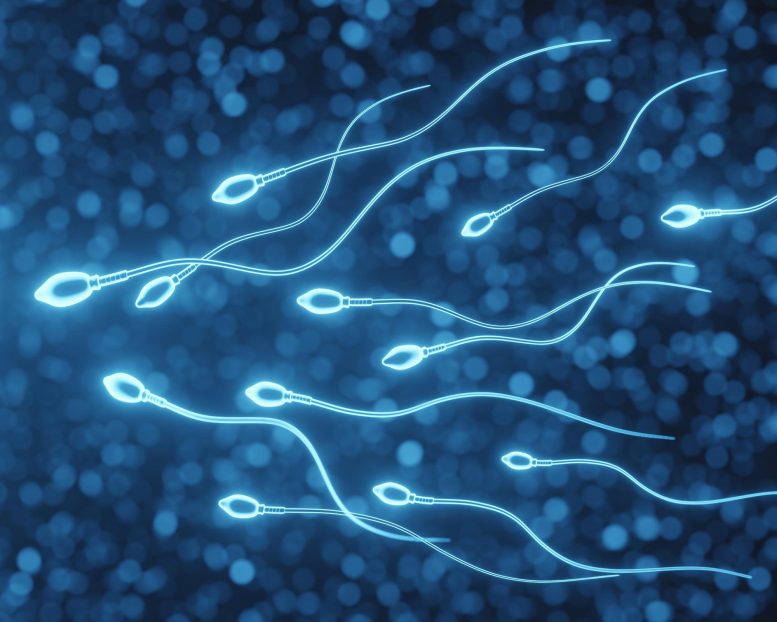Research from UCLA’s Department of Urology shows that the semen microbiome, especially microbes like Lactobacillus iners, can influence male fertility by affecting sperm motility, opening new paths for understanding and treating male infertility.
A new study finds that a small group of microorganisms may be influencing sperm motility.
You may have heard about the gut microbiome and its influence on a person’s overall health and well-being. It turns out that the same may hold true for the semen microbiome.
According to researchers from the Department of Urology at UCLA, the semen microbiota might play a crucial role in influencing sperm parameters and enhancing male fertility. Considering recent studies highlighting the microbiome’s significance in overall human health, researchers investigated the semen microbiome to understand its potential impact on male infertility.
Exploring the functions of these microorganisms in semen could potentially pave the way for developing treatments targeted at rectifying any issues with sperm parameters.
Impact of Lactobacillus Iners on Sperm Motility
The study found that one microbe in particular, Lactobacillus iners, may have a direct negative impact on male fertility. Researchers found that men with more of this microbe were more likely to have issues with sperm motility. Previous research revealed that Lactobacillus iners can preferentially produce L-lactic acid, potentially leading to a pro-inflammatory environment locally, which could adversely affect sperm motility.
The study authors point out that existing research has hinted at the link between this microbe and fertility, but most of the literature pertains to the vaginal microbiome and female factors. This is the first study to report a negative association between the microbe and male-factor fertility.
Diversity in the Semen Microbiome and Its Effects
Researchers also discovered that three types of bacteria in the Pseudomonas group were present in patients with both normal and abnormal sperm concentrations. Microbes called Pseudomonas fluorescens and Pseudomonas stutzeri were more common in patients with abnormal sperm concentrations, while Pseudomonas putida was less common in samples with abnormal sperm concentrations.
However, the findings indicate that not every member of the same closely related group may affect fertility in the same way, whether positively or negatively. In other words, even closely related microbes may not always have the same direct correlation to fertility.
Conclusion and Future Research Directions
“There is much more to explore regarding the microbiome and its connection to male infertility,” said Vadim Osadchiy, a resident in the Department of Urology at UCLA and the lead author of the study.
“However, these findings provide valuable insights that can lead us in the right direction for a deeper understanding of this correlation. Our research aligns with evidence from smaller studies and will pave the way for future, more comprehensive investigations to unravel the complex relationship between the semen microbiome and fertility.”
Reference: “Semen microbiota are dramatically altered in men with abnormal sperm parameters” by Vadim Osadchiy, Andre Belarmino, Reza Kianian, John T. Sigalos, Jacob S. Ancira, Trisha Kanie, Sarah F. Mangum, Craig D. Tipton, Tung-Chin M. Hsieh, Jesse N. Mills and Sriram V. Eleswarapu, 11 January 2024, Scientific Reports.
DOI: 10.1038/s41598-024-51686-4
Note: This article have been indexed to our site. We do not claim legitimacy, ownership or copyright of any of the content above. To see the article at original source Click Here














